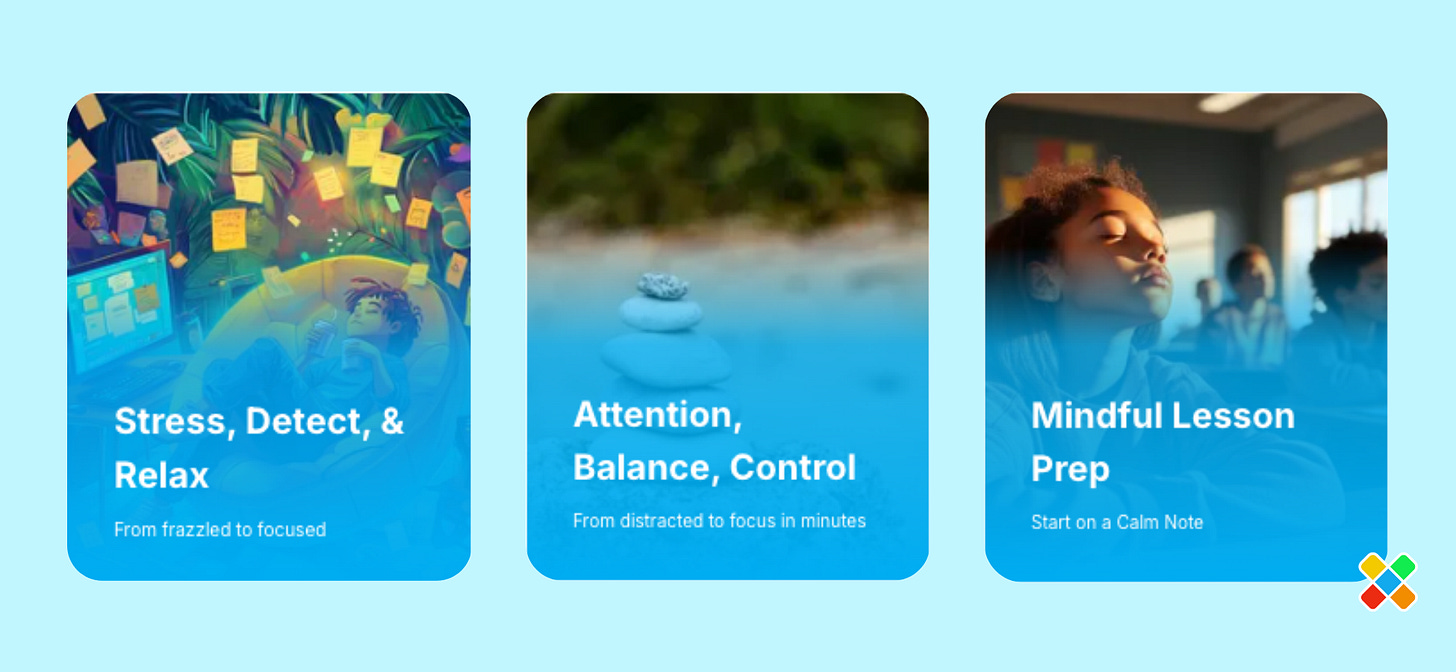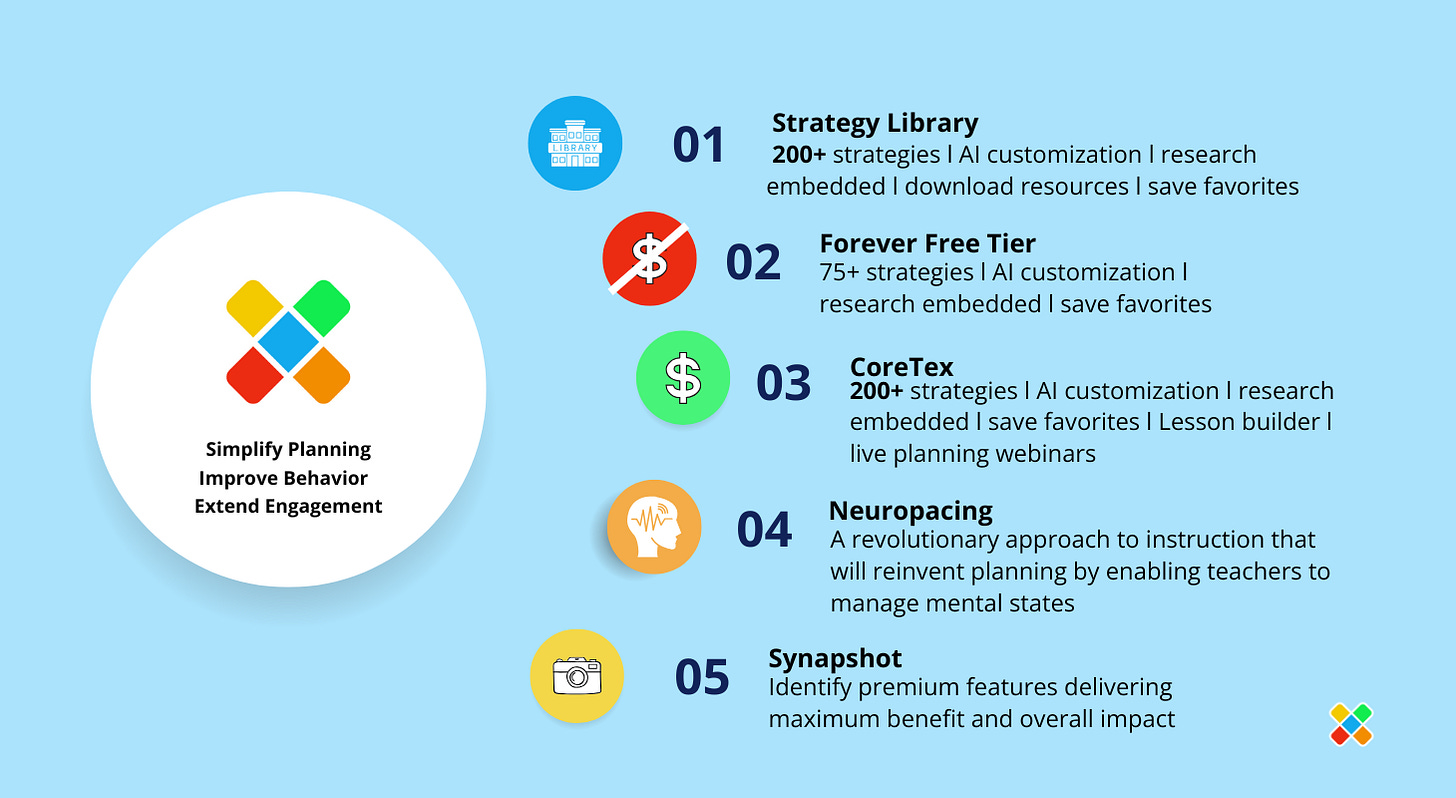From Reactive Rush to Learning-Ready
Are your students' minds where they need to be to learn best?

🏃 When The Classroom Door Flies Open (The Problem)
If you are a teacher, you know the scene. The sprint to beat the bell, the post-recess or hallway rush, the classroom door flying open, and the overwhelming energy that spills in. Excited stories, unresolved conflicts, and restless bodies collide with your plan to begin class.
You glance at the clock. Too often, those precious minutes to settle students disappear into repeated prompts and rising frustration:
Have a seat. Get out your books. Tommy, you need to get seated. Zoey, turn around. Eyes up here.
In those moments, frustration builds. It’s easy to wonder if you really have time for a calming routine. The answer is yes. It is the most powerful thing you can do to prepare their minds for learning.
🧠 From Revved Up to Ready (The Why)
The daily struggle to maintain focus and manage challenging transitions is a major pain point. The answer is rarely stricter discipline policies. The behaviors are typically not intentional.
More often, they are the result of brains that have not yet learned how or why a shift in energy is needed to get on, and stay on task to succeed. What you are seeing is a brain that is still revved up for play, speed, and social energy.

Why Directions Are Tough: The Emotional Brain
The brain is not built to slam on the brakes and go from sprint to stillness in a few seconds. After recess or a class change, the limbic system (the emotional brain) is typically in charge. It keeps students tuned into friends and the next social encounter, not your directions.
The amygdala pays close attention to anything that triggers strong feelings like excitement, humor, or frustration. Thinking comes later.
If the emotional brain stays in high gear, students will be unable to listen and learn efficiently. It is not that they came in planning to ignore you.
Their brains are simply in a state that fits the playground much more than the classroom.
🧘 The Blue Zone: Calming the Emotional Brain (The What)
We don’t need more rules or negativity. What is needed is time, tools, and consistency. This will enable students (and teachers) see and feel the links between the body, the brain, breathing, and school success.
These routines give students a moment to come into the present and get ready to learn. These are the foundational routines that build the cognitive and emotional state of the Blue Zone.
These essential routines, such as a guided body scan, supported mindful breathing exercises, and quiet focus activities, are what we call Blue Strategies.
Grounded in Neuroscience
The Blue Zone is an analogy we use to describe that essential learning-ready state: calm, focused, and reflective.
The Antidote to Overstimulation:
The Blue Zone is the antidote to the overstimulated emotional brain. It provides a state of calm and mindfulness that is conducive to learning.
The DMN Connection:
This state is grounded in network neuroscience, specifically linked to the brain’s Default Mode Network (DMN) . The DMN is the network responsible for self-regulation and reflection.
The Benefit:
When a student is in the Blue Zone, they have the emotional stability necessary to shift energy and successfully stay on task. The goal is simple: to help students self-regulate their emotions and strengthen their ability to focus.
When you explain the purpose and outcome of Blue Zone routines, students begin to understand why you are using them and how they help them succeed.
🔑 Activating Focus and Control (The How)
Calm moments also give students practice with self-regulation. When they learn to notice their own state and use a short routine to settle, they strengthen the link between the emotional brain and the thinking brain.
The prefrontal cortex (PFC), which sits right behind the forehead, helps with focus, decision making, and impulse control.
When the PFC is online, students can pause, notice what is expected, and shift their attention. When the emotional brain is setting the pace, thoughtful response is much more difficult.
By building short, predictable routines that help students settle their minds and bodies, you give this calmer network a chance to light up. Students move from high energy into a more present, internally focused state where their minds become steady, attentive, and ready to learn.
Calm is teachable. Three Blue Zone routines that move students from frazzled, scattered, and distracted to focused and ready to learn.

💡 Blue Zone Strategies to Try Today
Here are three foundational strategies for creating the Blue Zone in your classroom:
Mindful Lesson Prep: This strategy uses a deliberate shift in the environment like soft music and strategic lighting to signal the impending focus shift, streamlining transitions and preparing the mind for attention.
Attention, Balance, Control: This is a simple mind body challenge that forces the brain to shift from social energy to physical focus, quickly integrating the body and mind. It’s a perfect reset before a complex task.
Stress, Detect, Relax: This is a guided, personalized practice that helps students build lasting self-regulation skills by teaching them to recognize and actively manage their own internal state.
🧘 Example: Stress, Detect, Relax: Building Self-Awareness
The first critical step in self-regulation is self-awareness. You can’t change what you don’t acknowledge. Detect Tension: You ask the student, “Where do YOU feel stress in your body?” This simple question teaches students to locate tension in their bodies. Orally walk them through a body scan. How is the tension in their jaw, shoulders, or stomach? Compare tense and non tense, ask them to describe the difference.
By identifying the tension, you help students recognize that they have a choice about their physical state. The full Stress, Detect, Relax strategy guides them through three more personalized steps (Relax Body, Replace Thoughts, and Reimagine Calm) to manage that stress and shift into a learning state.
📚 Strategy Resources
Many of the strategies in the app contain downloadable resources. As seen below, the Stress, Detect, Relax resource is ready to be shared in Google Classroom, providing a tangible tool for students to make the practice their own.
✅ Your Next Step: Claim Your Blue Zone Toolkit
If you have not tried to guide your students in accessing their Blue Zone, you will be amazed what a difference it makes. When you teach students the skill to calm their minds and refocus, you are giving them a skill they can carry with them into life.
Ready to Transform Your Transitions?
The strategies and resources shared here are just a fraction of the full toolkit. The BrainZones app gives you complete access to over 200 strategies, personalized lesson building, and the ability to download resources like the Stress, Detect, Relax guide.
Stop managing chaos and start teaching regulation.
🚀 BrainZones App: Easier Teaching, Stronger Results
The BrainZones app provides the consistent, science-backed approach you need to transform your classroom’s emotional landscape.
Take the next step toward a calm, focused, and engaged classroom.
Click here to explore the BrainZones App and claim your strategies today!
The BrainZones app
Peak inside: 40s YouTube overview of the BZ app
Thanks for reading Shift Happens,
Debbie, Marcey, and Marlon - The BrainZone’s Team




